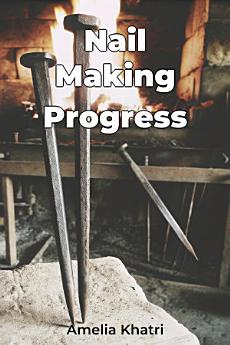Nail Making Progress
About this ebook
The book progresses chronologically, starting with ancient hand-forging methods and moving through the mechanization of the Industrial Revolution to modern automated processes. It highlights the impact of these advancements on labor practices and economic structures. For example, the introduction of water-powered machinery drastically increased nail production during the Industrial Revolution.
The narrative emphasizes how nail manufacturing serves as a microcosm of overall industrial advancement, reflecting changes in technology and manufacturing efficiency. This unique approach provides readers with a comprehensive and accessible account of nail-making evolution. By examining patent records, historical accounts, and archaeological findings, Nail Making Progress synthesizes information from diverse fields. The book connects nail production history to economic history and material science, making it valuable for historians of technology, students of economic history, and anyone interested in manufacturing processes.








